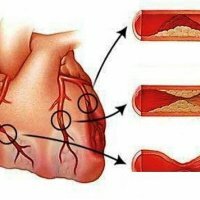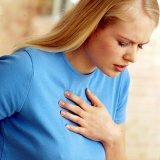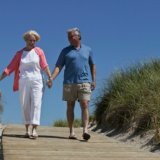Stroke of the brain
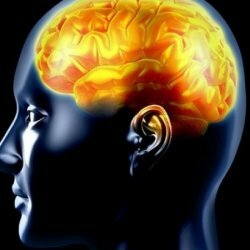 There are many reasons that lead to a stroke in humans. The main thing is to know these reasons and follow simple recommendations to avoid this ailment.
There are many reasons that lead to a stroke in humans. The main thing is to know these reasons and follow simple recommendations to avoid this ailment.
Stroke is a sudden partial loss of brain function caused by a clot, it blocks the flow of blood to the areas of the brain. Without oxygen and nutrients, affected brain cells are damaged or die within a few minutes.
Although cell damage and their functions can be restored, their death in the brain is incurable. Most of the injuries or deaths are caused by blood clots or narrowing of the blood vessels( arteries) leading to the brain. Other strokes are caused by hemorrhage( bleeding) from the artery.
There are three main types of stroke:
-
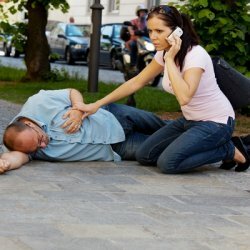 Thrombotic stroke, caused by fat deposits( plaques) that have grown on the walls of the arteries. This slows down the blood flow, the thrombus completely blocks the passage in the arteries, that is, blocks the flow of oxygen and nutrients to the brain.
Thrombotic stroke, caused by fat deposits( plaques) that have grown on the walls of the arteries. This slows down the blood flow, the thrombus completely blocks the passage in the arteries, that is, blocks the flow of oxygen and nutrients to the brain. - Embolic stroke. It is caused by the formation of thrombi in another part of the body. They break out, pass through the blood and block the arteries. During a journey through the body, a thrombus is called embolism.
- Hemorrhagic stroke is characterized by a decrease in blood pressure, no matter what state the person is in: at rest or in motion.
Stroke diagnosis
Stroke requires immediate medical attention. Studies show that treatment during the first hours after the onset of symptoms is very important to save as much brain cells as possible. Doctors should make an early diagnosis, looking at the symptoms, tests, the patient's medical history and tests, such as brain scans. 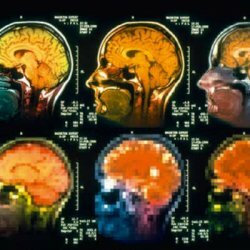
Stroke prevention
It used to be believed that a stroke is a sudden attack of the brain. But now they are sure that the stroke develops for many years. Risk factors or conditions that can lead to a stroke include: high blood pressure, smoking, heart disease and diabetes. The risk of stroke increases with age.
Reduce the risk of stroke by taking the following steps:
- Monitor blood pressure. Check your blood pressure more often, and if it's high, follow your doctor's advice on how to lower it. Treatment of high blood pressure reduces the risk of developing both a stroke and heart disease.
- Quit smoking. Smoking is associated with an increased risk of stroke. For those who quit smoking for 2-5 years, the risk of developing is lower than that of smokers.
- Regularly do physical exercises. Physical exercises can make the heart stronger and improve blood circulation. It also helps to control weight. Excess weight increases the likelihood of high blood pressure, atherosclerosis, heart disease and diabetes.
- Physical activity, such as fast walking, cycling, swimming, and gardening - reduces the risk of stroke and heart disease. Talk with your doctor before starting the exercise program.
- Eat healthy food. Prepare and eat foods that are low in fat, saturated fatty acids and cholesterol. Eat a variety of fruits and vegetables.
- Control diabetes. If not treated, then diabetes can lead to damage to the blood vessels throughout the body.
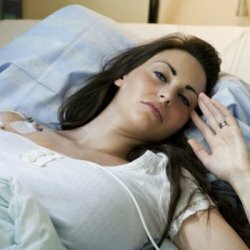 Tell your doctor promptly about any signs or symptoms. Warning signs of a stroke, this sudden, unexplained tingling or numbness on one side of the body, sudden severe headache, blurred vision, difficulty speaking, stumbling and sudden awkwardness. Sometimes a mini-stroke, lasting only a few minutes, is called a transient ischemic attack, he usually goes before a stroke.
Tell your doctor promptly about any signs or symptoms. Warning signs of a stroke, this sudden, unexplained tingling or numbness on one side of the body, sudden severe headache, blurred vision, difficulty speaking, stumbling and sudden awkwardness. Sometimes a mini-stroke, lasting only a few minutes, is called a transient ischemic attack, he usually goes before a stroke.
Rehabilitation after a stroke
Rehabilitation should begin as soon as possible. After the help is given, it is necessary to wait, since the stroke can be periodic in a short time. Rehabilitation includes many types of treatment: physiotherapy to strengthen the muscles and improve balance and coordination, therapy and occupational therapy to improve coordination of the eyes and hands. For some, recovery may end within a few weeks after a stroke, for others it may take many months or years.

